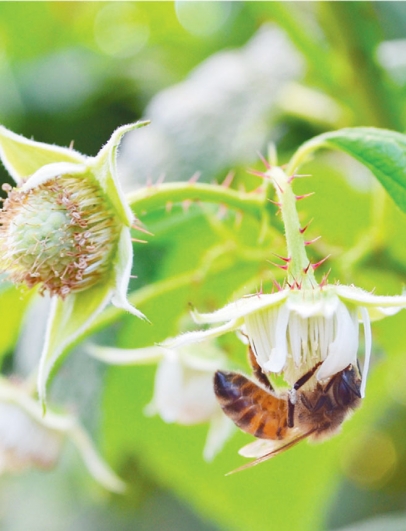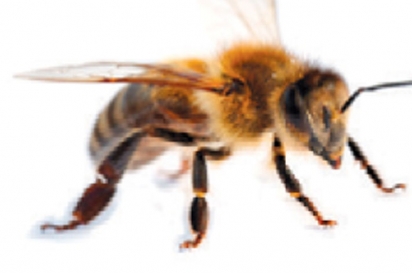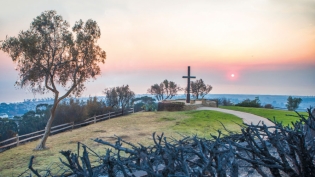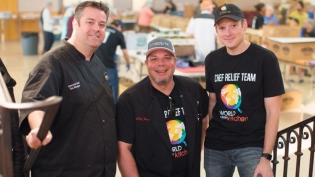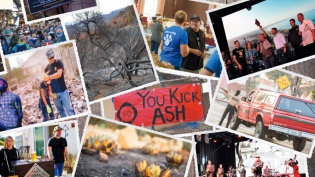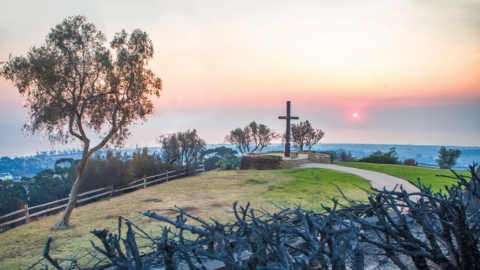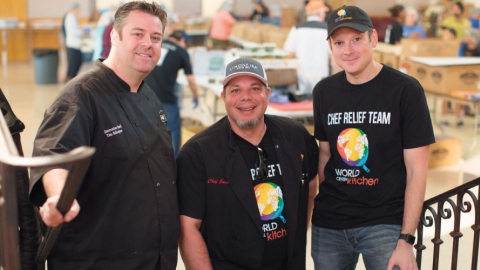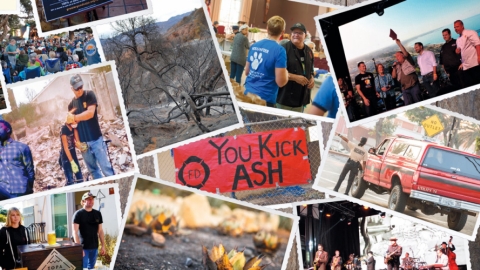Bee Strong
Bees and their keepers are a resilient bunch
As the Thomas Fire ravaged all things big and small, I wondered about some of the smallest victims: the bees. And, by extension, the local beekeepers whose livelihoods are tied to the bees, and, well, local honey.
For most of us, bees plus beekeepers equals delicious honey. But bees are important to Ventura County farmers as crop pollinators, too. It’s because of bees’ handiwork that we have apples, citrus, onions and avocados, to name a few. “Avocado orchards often require up to six honeybee colonies per acre to achieve successful pollination because avocados have a unique flowering system that requires that pollen come from a different cultivar,” explains Ruben Alarcón, PhD, associate professor of biology at California State University, Channel Islands.
The Ventura County Agricultural Commissioner’s Office reported that county apiaries are expected to suffer $139,500 in losses as a result of the fire. Apiary products contributed $2,786,000 to our economy, according to the Ventura County’s Crop & Livestock Report 2016, so you could argue that the loss is a drop in the bucket. Still, many local beekeepers are impacted.
Ryan O’Dell’s apiaries were in the burn zones above Foothill Road in Ventura. “I lost almost everything, which included over 150 strong colonies and equipment—hundreds of bee boxes and thousands of stored combs.” He adds, “I counted seven hives that still have bees in them [in the single remaining yard], down from 70.”
Based on the conversations with O’Dell and other local bee gurus, it looks like there’s good news, bad news and some time-will-tell news. Some good news: There will be local honey.
“I have more than a year’s supply of honey right now,” says Dave Mitchell, co-owner with his wife, Wendi, of Ventura’s Blue Ridge Honey, which has bees in Ojai, Somis, Camarillo, Santa Paula and many other areas throughout the county. “That’s the one nice thing about honey. You can put it in 55-gallon barrels and store it.”
“The hand-extracted honey from last year during spring and summer is still intact and doesn’t spoil,” adds O’Dell, of Sunshine Honey in Ventura.
THE BEES
Not only were hives destroyed by the fire, there was the issue of the smoke’s impact on the bees. “Smoke makes it harder for the bees to communicate through the use of pheromones and they are less likely to forage on flowers when it is smoky,” says Alarcón, who teaches an apiculture and bee biology course at CSUCI. “Instead, they gorge themselves with the honey they have saved in preparation in case their hive burns and they have to flee.”
“But equally devastating is the loss of flowering plants due to the fire,” Alarcón notes. “There is nothing for the bees to feed on where the fire took place.”
“You can have a devastating fire and get some good average rain and actually make honey,” says Blue Ridge Honey’s Dave Mitchell. “When you see it stay dry like this, that’s what’s even harder and more devastating.”
Anna Howell, an entomologist with UC Cooperative Extension Ventura County, is hopeful. “Honeybees are a pretty resilient lot,” she says. They can forage a range of four to six miles so they can travel if the immediate area has no food, she says.
This is true for Steve and Kelly Nimmer of Mission Beekeeping’s bees. The bees are close to a burn area but they can forage on unburned land for miles, they say.
Blue Ridge Honey had a “very small” colony loss during the fire, though many of their Ventura County locations for gathering wildflower, sage and buckwheat pollen were burned. The loss may affect their honey flow in the spring, says Wendi Mitchell.
“We’re a small apiary, so it’s easy for us to load up hives and move them to more productive areas and make honey,” she says. They plan to produce honey with local buckwheat and toyon foraged this spring.
THE BEEKEEPERS
Beekeepers are a pretty resilient lot, too, and the ones I spoke with are looking to the future.
Mission Beekeeping lost half its 160 colonies located on Ventura Avenue to the fire. The Nimmers raised over $10,000 through their GoFundMe campaign to rebuild their apiary, which they founded in 2015. “The community response has been invigorating,” says Kelly Nimmer.
They had planned to begin producing honey this spring, but have decided to change the way they run their operation. Now they say they’ll expand their colonies and begin producing honey in 2019.
“I’m trying to hold on and rebuild my bee yards from the ash, as difficult as it is,” says O’Dell. “Not exactly sure what is in store for me in the next year or two, but I’m beyond humbled by this community’s unwavering support for me and this passion I have for beekeeping.”
The takeaway? When you shop for honey, seek out the many locally produced varieties you find at our area farmers’ markets and specialty markets. These honeys are flavorful—with each variety having a distinct flavor profile—and you’ll be helping to support our local beekeepers.


